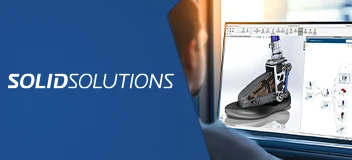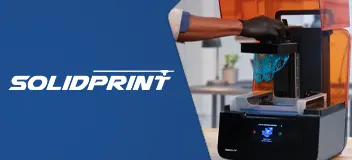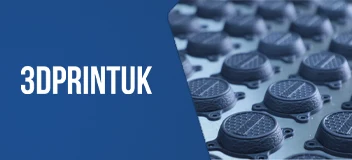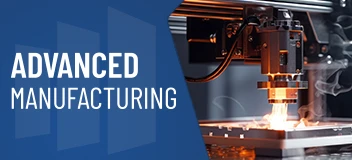SOLIDWORKS CAM Professional Training Course Overview
This course teaches how to use the SOLIDWORKS CAM Professional software to machine parts utilizing advanced functionality such as: CAM or SOLIDWORKS configurations, VoluMill™, mill machining in the context of an assembly, and 3 plus 2 machining.
This training course will help you to:
- Learn High Speed Machining and creating VoluMill Toolpaths.
- Using the SOLIDWORKS CAM Assembly mode for machining, using a vise, and split instance.
- Understand 3 Plus 2 Machining and working with a Tombstone.
- Learn Turning basics and generating NC code.
- Modify features.
- Use Probes.
SOLIDWORKS CAM Professional Course Requirements & Benefits
Understand the course requirements and the skills you will acquire after completing the SOLIDWORK CAM course
SOLIDWORKS CAM Professional Lessons
The following lessons are included in the course
Lesson 1: SOLIDWORKS CAM Configurations
- SOLIDWORKS CAM Product
- SOLIDWORKS CAM Configurations
- Case Study: Using Configurations Working With CAM Configurations
- Exercise 1: Generate Toolpaths for Part Configurations
Lesson 2: High Speed Machining (VoluMill™)
- VoluMill Overview
- Case Study: Using VoluMill
- VoluMill Settings
- VoluMill Technology Expert
- Exercise 2: Create VoluMill Toolpaths
Lesson 3: Assembly Machining
- SOLIDWORKS CAM Assembly Mode
- Case Study: Assembly Machining Using a Vise
- Part Manager
- Stock Manager
- Setup Parameters
- Case Study: Assembly Machining -Programming with Subroutines
- Case Study: Assembly Machining - Multiple Parts
- Case Study: Assembly Machining Split Instance
- Import Part Data
- Split Instance
- Split Setup
- Exercise 3: Assembly Mode Machining
- Exercise 4: Assembly Mode Multi-vise Machining
- Exercise 5: Assembly Mode Split Instance
Lesson 4: 3 Plus 2 Machining
- 3 Plus 2 Machining (Indexing)
- Case Study: 3 Plus 2 - Part Machining
- Indexing
- Case Study: Assembly Machining with a Tombstone
- Exercise 6: 3 Plus 2 Machining
Lesson 5: Turning Basics
- SOLIDWORKS CAM Turning Overview
- Case Study: Generate Toolpaths and NC Code
- Setup
- Chuck/Fixture
- Stock
- Machinable Features
- Case Study: Interactive Features and Operations
- New Turn Feature
- Exercise 7: Basic Turning Process
- Exercise 8: Interactive Turn Features
Lesson 6: Chucks, ID Features and Operations
- Section Method
- Case Study: Using Plane Section
- Double Chucking
- Case Study: Using Double Chucks
- Exercise 9: Chucks, ID and OD Features
Lesson 7: Modifying Feature and Operation Parameters
- Case Study: Custom Chuck, OD and Thread Features
- Editing Toolpaths
- Exercise 10: Modifying Features and Operations
Lesson 8: Probing
- Introduction to Probing
- Probe Operation
- Case Study: Probing Operations - Part 1
- Case Study: Probing Operations - Part 2
- Case Study: Probing Operations - Part 3
- Exercise 11: Using Probing Tools
Training Methods
Choose the training method right for you

Group/Public Training
Receive training as a group (limited amount per class) from certified instructors using vendor approved training content and methodologies.
Training is delivered either live online or in a traditional classroom environment.
Advantages
- Cost effective training method.
- More effective than video based training, with videos learners are often not as focused on the training and skip exercises.
- Learn more through group questions and feedback.

Private Training
This style of flexible training is perfect for teams or individuals who are faced with a specific challenge and require personalized courses with on-the-job coaching.
Training is available live online, in-person classroom or onsite at your location.
Advantages
- Use our state-of-the-art mobile classroom at your facility.
- Bring your team up to a consistent level of knowledge by having them take the same training at the same time.
- Benefit from flexible scheduling options.
Upcoming Training Courses
Choose a scheduled SOLIDWORKS CAM Professional course
Are you using SOLIDWORKS to its full potential?
Enhance your skills and capabilities with a SOLIDWORKS Training Assessment from TriMech.













